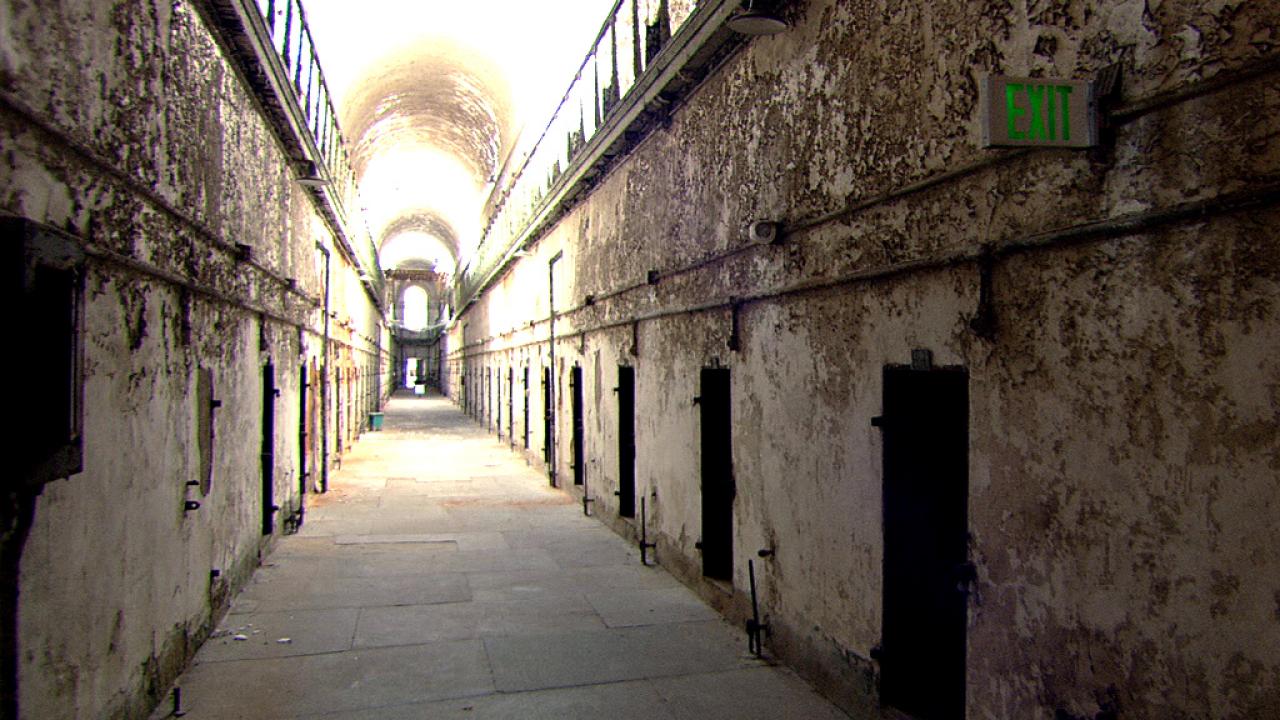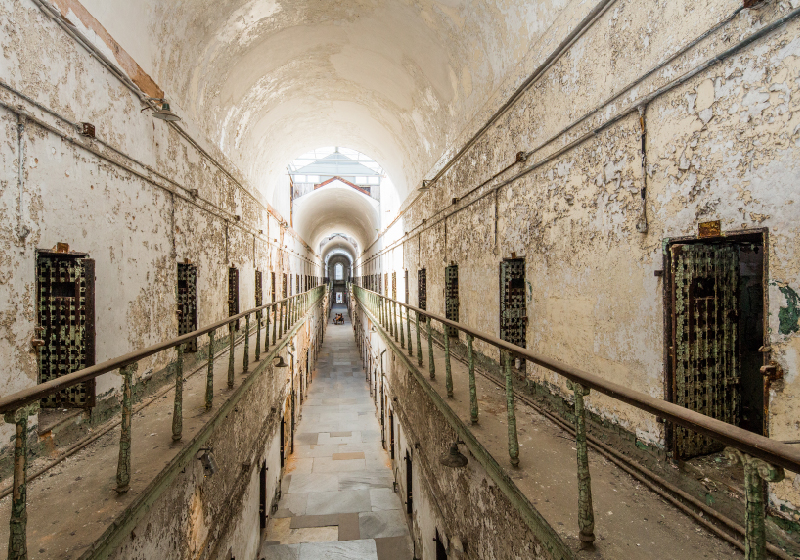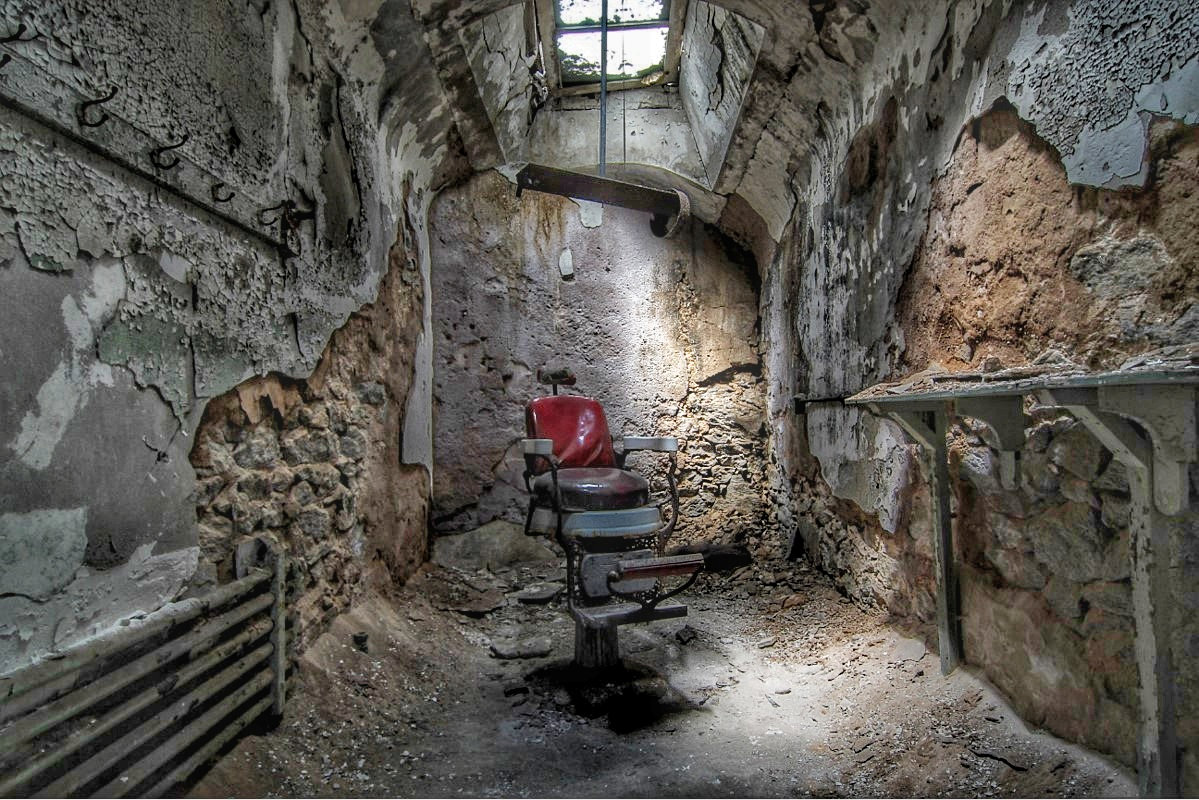Nestled in the heart of Philadelphia, the Eastern State Penitentiary stands as a hauntingly beautiful testament to America’s penal history. This formidable structure, with its looming Gothic architecture and imposing stone walls, has captured the imaginations of visitors from around the world. The Eastern State Penitentiary is not just a physical structure but a symbol of a significant shift in the philosophy of incarceration and rehabilitation in the United States. In this article, we will explore the rich history, architecture, and unique features that make Eastern State Penitentiary an essential landmark. Eastern State Penitentiary, often referred to as ESP, opened its doors in 1829 and marked a turning point in the American penitentiary system. Designed by architect John Haviland, it was the world’s first true penitentiary and introduced the concept of solitary confinement as a means of prisoner rehabilitation. The Quaker-inspired notion behind this system was to provide inmates with an opportunity for introspection and moral reform by isolating them from the corrupting influence of other prisoners.

The prison became a model for many other penitentiaries across the United States and around the world. Famous reformers such as Charles Dickens and Alexis de Tocqueville visited ESP, with Dickens expressing both fascination and unease about the system. One of the most striking aspects of Eastern State Penitentiary is its Gothic architecture. The prison’s design, with its high stone walls and looming towers, was meant to convey a sense of foreboding, intending to deter potential wrongdoers. Its radial floor plan, inspired by the wheel spokes, allowed for efficient surveillance, with a single watchman stationed at the center of the rotunda who could observe all the cell blocks simultaneously. Each cell in the prison was a small, spartan chamber with a skylight, a simple toilet, and a bed. The design emphasized the idea of isolation and self-reflection. Inmates were to spend 23 hours a day in their cells, with one hour allocated for exercise in individual exercise yards.

Over its operational years, Eastern State Penitentiary housed several notorious criminals. One of the most well-known inmates was Al Capone, the infamous gangster, who served time there in the 1920s. His luxurious cell, which he furnished with rugs and fine furniture, remains a popular attraction at the prison. Another infamous inmate was Willie Sutton, a bank robber known for his repeated escapes and a penchant for tunneling his way out of prisons. While at ESP, Sutton continued his escape attempts, although none were successful. Eastern State Penitentiary closed its doors as a functioning prison in 1971. The complex fell into disrepair but was saved from demolition by a group of dedicated individuals who recognized its historical significance. In 1988, the prison was designated a National Historic Landmark, and efforts to preserve and restore the site began.

Today, Eastern State Penitentiary operates as a museum and historic site, welcoming visitors from around the world. The site offers guided tours that delve into the prison’s history, its famous inmates, and the evolution of the penitentiary system in the United States. Eastern State Penitentiary, a remarkable testament to the evolution of America’s penal system, is more than just a historic site; it is a living museum of social reform, architecture, and the complexities of human nature. Its imposing facade and unique history continue to draw visitors curious about its past and its role in shaping the American penitentiary system. As a symbol of both progress and controversy, Eastern State Penitentiary invites us to reflect on the history of incarceration, the pursuit of reform, and the human capacity for resilience and transformation.
